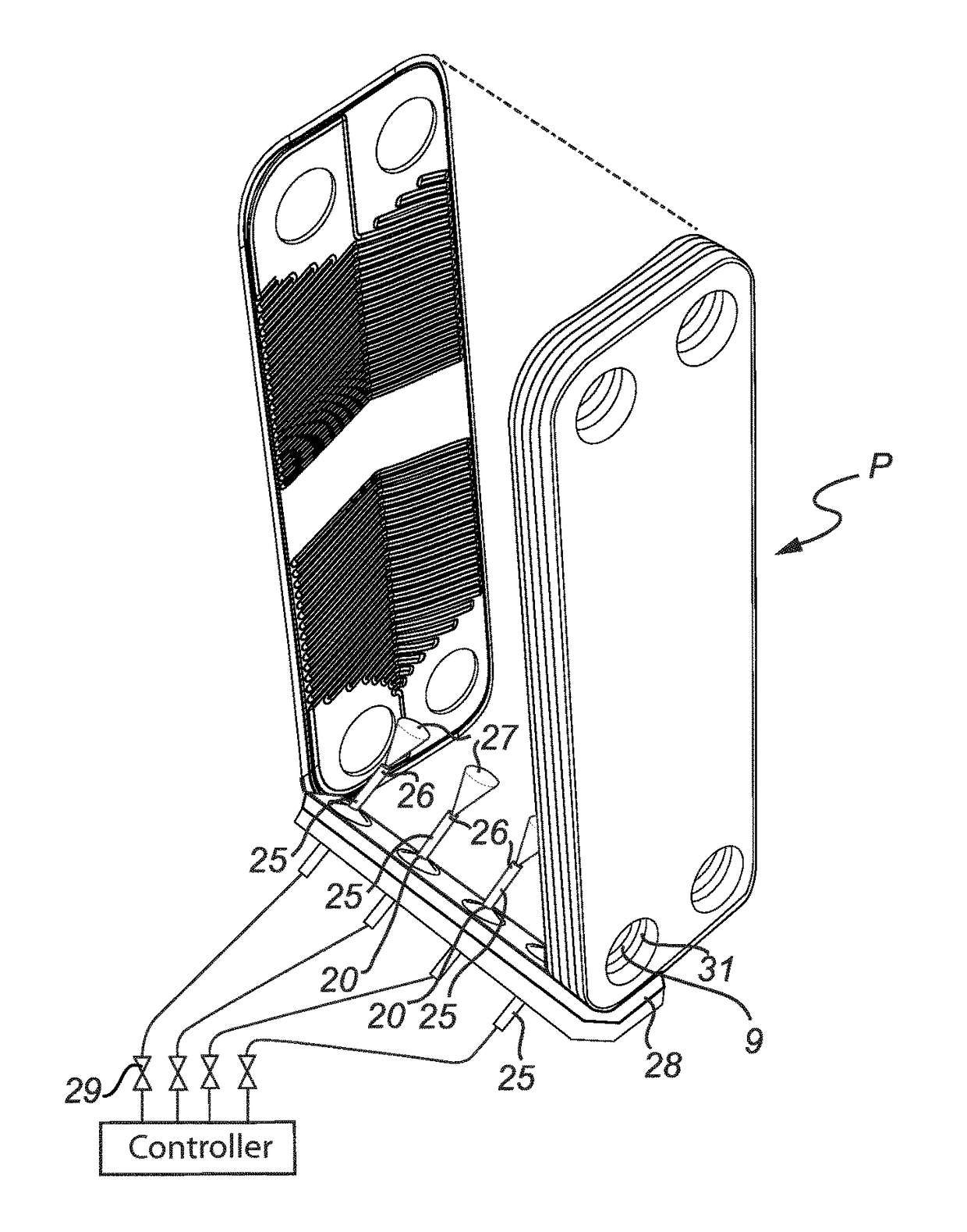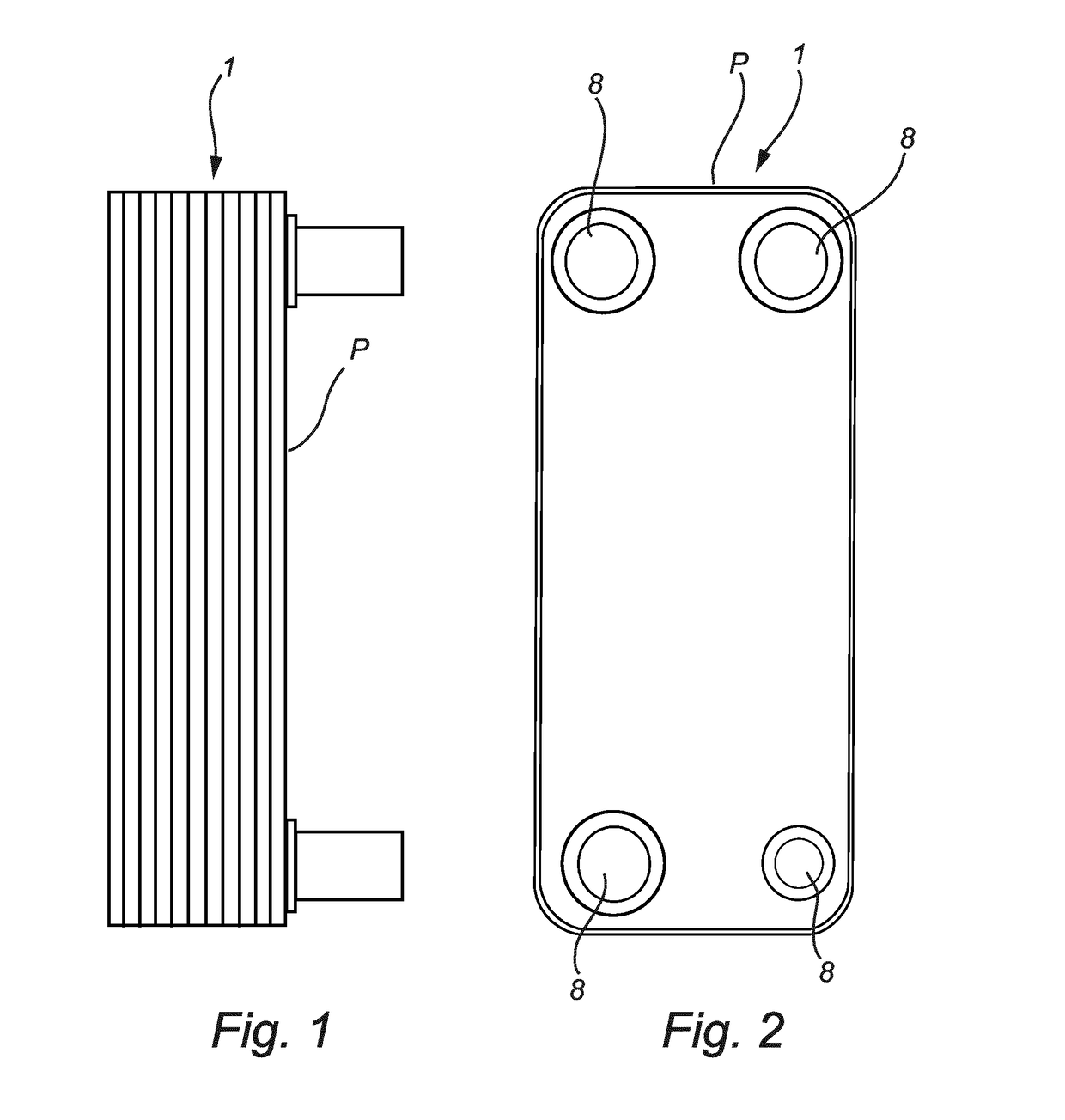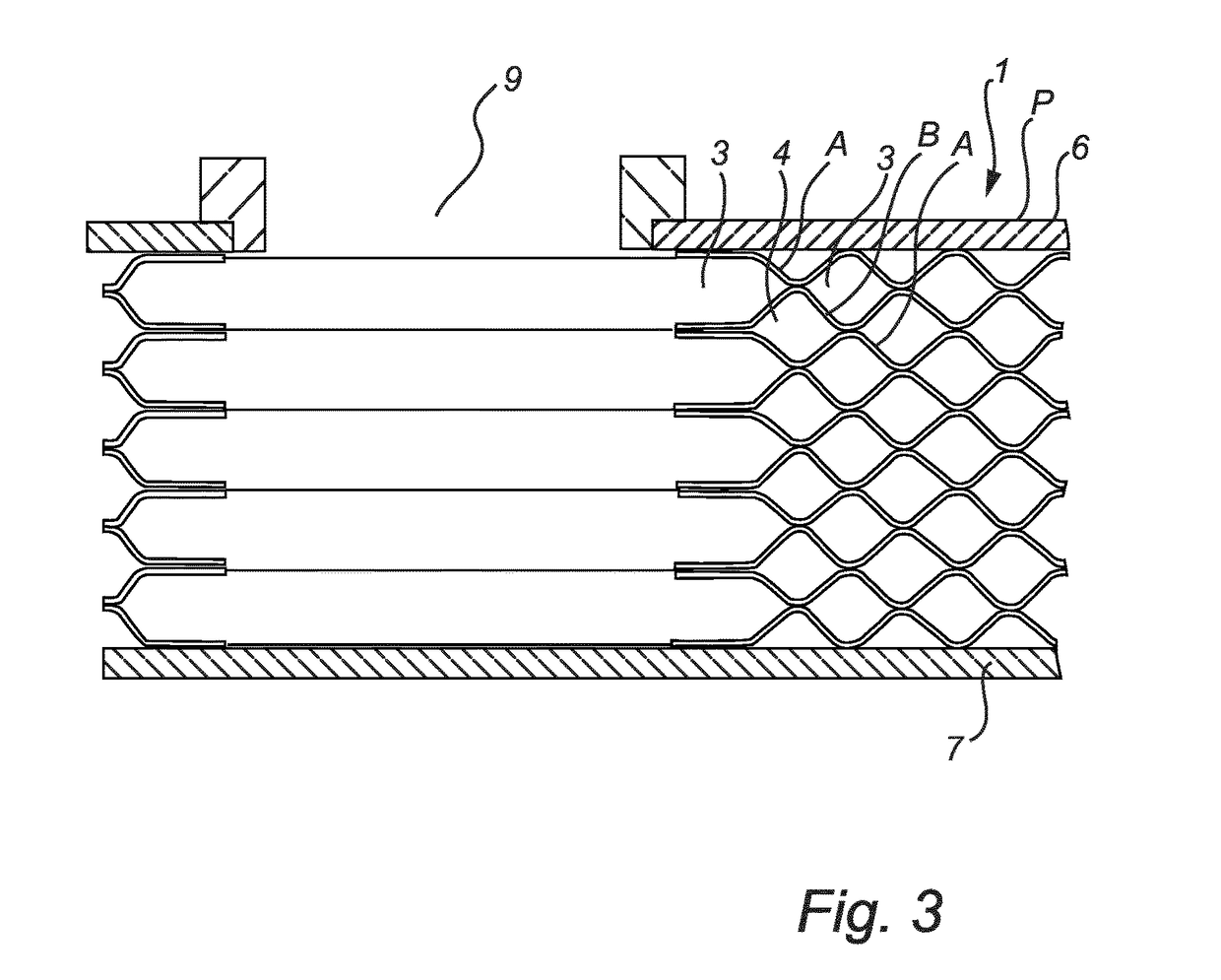Plate heat exchanger
a heat exchanger and plate technology, applied in the direction of indirect heat exchangers, stationary plate conduit assemblies, lighting and heating apparatus, etc., can solve the problems of difficult to provide an optimal, difficult to control the flow inside the first inlet channel, and the energy content of the inserted fluid is too high, so as to achieve the control of the overall efficiency of the plate heat exchanger and high efficiency.
- Summary
- Abstract
- Description
- Claims
- Application Information
AI Technical Summary
Benefits of technology
Problems solved by technology
Method used
Image
Examples
Embodiment Construction
[0043]For better understanding of the invention, an example of a typical plate heat exchanger 1 will be disclosed with reference to FIGS. 1-5. The plate heat exchanger 1 includes a plate package P, which is formed by a number of compression-moulded heat exchanger plates A, B, which are provided side by side of each other. The heat exchanger plates are disclosed as two different plates, which in the following are called the first heat exchanger plates A, see FIGS. 3 and 4, and the second heat exchanger plates B, see FIGS. 3 and 5. The plate package P includes substantially the same number of first heat exchanger plates A and second heat exchanger plates B.
[0044]As is clear from FIG. 3, the heat exchanger plates A, B are provided side by side in such a way that a first plate interspace 3 is formed between each pair of adjacent first heat exchanger plates A and second heat exchanger plates B, and a second plate interspace 4 between each pair of adjacent second heat exchanger plates B a...
PUM
 Login to View More
Login to View More Abstract
Description
Claims
Application Information
 Login to View More
Login to View More - R&D
- Intellectual Property
- Life Sciences
- Materials
- Tech Scout
- Unparalleled Data Quality
- Higher Quality Content
- 60% Fewer Hallucinations
Browse by: Latest US Patents, China's latest patents, Technical Efficacy Thesaurus, Application Domain, Technology Topic, Popular Technical Reports.
© 2025 PatSnap. All rights reserved.Legal|Privacy policy|Modern Slavery Act Transparency Statement|Sitemap|About US| Contact US: help@patsnap.com



